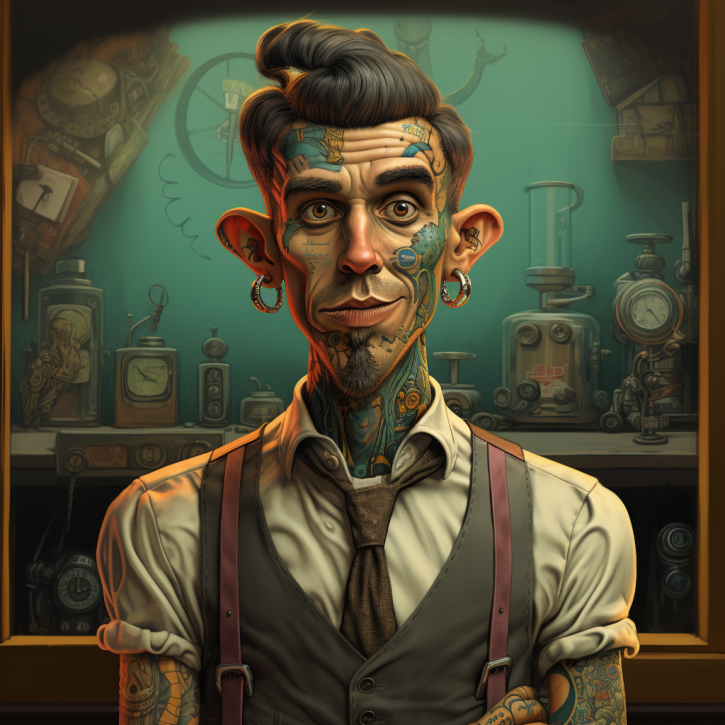Tattoos have become increasingly mainstream over the past few decades, evolving from symbols of counterculture and rebellion to a more widely accepted form of self-expression.
A national Australian study published in 2012 sought to examine the prevalence and characteristics of tattooing in a representative sample of adults.
The key findings were:
- 14.5% of Australians ages 16-64 reported having at least one tattoo.
- Men were slightly more likely to have tattoos than women (15.4% vs 13.6%). However, women in their 20s had higher rates than men of the same age.
- Tattooing was most common among adults ages 20-39. Nearly 1 in 4 men and women in their 30s reported having tattoos.
- Education level was correlated with tattoo prevalence. Those with lower education levels were more likely to have tattoos.
- Tattooing was associated with certain risk-taking behaviors like smoking, drug use, higher numbers of sexual partners, and depression diagnosis.
Source: Ann Epidemiol.
Tattoo Trends: Popularity on the Rise
Tattooing has experienced a notable growth in popularity and visibility over the past few decades.
Once associated primarily with subcultures like gang membership or military service, tattoos have broken into mainstream culture and gained wider social acceptance.
Celebrities, athletes, and young people have embraced tattoos as a popular form of self-expression.
National surveys show a clear upward trend in tattoo prevalence among Australian adults:
- 10.1% in 1998
- 12.6% in 2001-2002
- 14.5% in 2004-2005
This suggests tattoos are now common across many demographics rather than just isolated subcultures.
However, some groups are still more likely to have tattoos than others.
Tattooing More Common Among Men and Younger Adults
Overall, the 2012 study found a slightly higher percentage of men compared to women reported having tattoos (15.4% vs. 13.6%).
But gender differences varied across age groups:
- Women ages 20-29 had the highest rate of tattooing (29.4%) compared to men of the same age (22.3%).
- Men ages 40-49 and 50+ had higher tattoo rates than women in those age brackets.
This highlights how motivations for getting tattooed have evolved over time between men and women.
Historically, tattoos were associated more with men and concepts like gang membership, incarceration, and military service.
But tattoos have taken on a fashionable, aesthetic role among younger generations of women.
Regardless of gender, tattoo prevalence peaked among adults ages 20-39 in the study:
- Ages 20-29: 29.4% of women, 22.3% of men
- Ages 30-39: 22.3% of women, 23.2% of men
The popularity of tattooing tapers off among middle aged and older adults.
This suggests tattoos still remain an art form embraced predominantly by Millennials and Gen Z.
Lower Education Levels Correlated with Tattooing

The study found correlations between education level attained and tattoo prevalence.
Men and women with lower levels of education were more likely to have tattoos:
- Men without secondary school completion had a tattoo rate of 21.7% compared to just 5.6% among those with post-secondary education.
- Women showed a similar pattern: 13.5% of those without secondary education had tattoos versus 10% of those with post-secondary schooling.
Additionally, men working as tradesmen had a 23.1% tattoo rate compared to just 9.4% among professionals.
The reasons for discrepancies in tattoo prevalence across education levels are unclear.
This could simply reflect differences in cultural values or social influences among these groups.
Tattoos Linked with Risky Behaviors
Even as tattoos gain wider acceptance, the study still found associations between having a tattoo and engagement in certain risky behaviors:
Smoking
- Men with tattoos had 2x higher odds of being a current smoker.
- Women with tattoos had 2.6x higher odds of being a current smoker.
Drug Use
- Women who had used cannabis in the past year had 1.7x higher odds of having a tattoo.
Sexual Partners
- Higher number of lifetime sexual partners correlated with tattoo prevalence for both men and women. For example, 24.4% of men with 11+ partners had tattoos compared to just 4.2% with 0-1 partners.
Depression
- Men diagnosed with depression showed 1.3x higher odds of having a tattoo.
While the study does not prove tattoos directly cause risky behavior, the associations suggest tattoos may still signify an inclination towards impulsivity and sensation-seeking in some individuals.
However, tattoos likely mean very different things to different people. More research is needed on motives and personal meanings behind tattoos.
Tattoos Transitioning to Mainstream Culture
In summary, this national study provides insights into the evolving role of tattoos in Australian culture.
While once confined to subcultures, tattoos now appear common across many demographics.
However, prevalence remains highest among Millennials and Gen Z.
The popularity and acceptance of tattoos likely relates to changing cultural values and forms of self-expression.
However, associations between tattooing and risky behaviors suggest they still signify rebelliousness among some individuals.
Further research on the psychosocial factors behind tattoos can provide broader understanding of their shifting sociocultural role and importance to personal identity.
But the ubiquity of tattoos today clearly demonstrates their integration as a commonplace form of body art and self-expression in contemporary society.
References
- Study: Who gets tattoos? Demographic and behavioral correlates of ever being tattooed in a representative sample of men and women
- Authors: Wendy Heywood et al. (2012)







